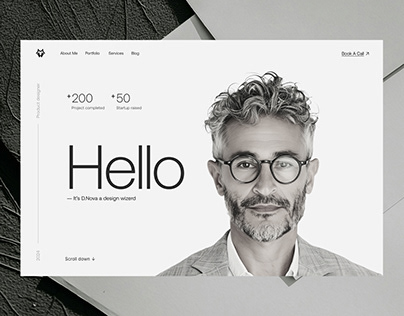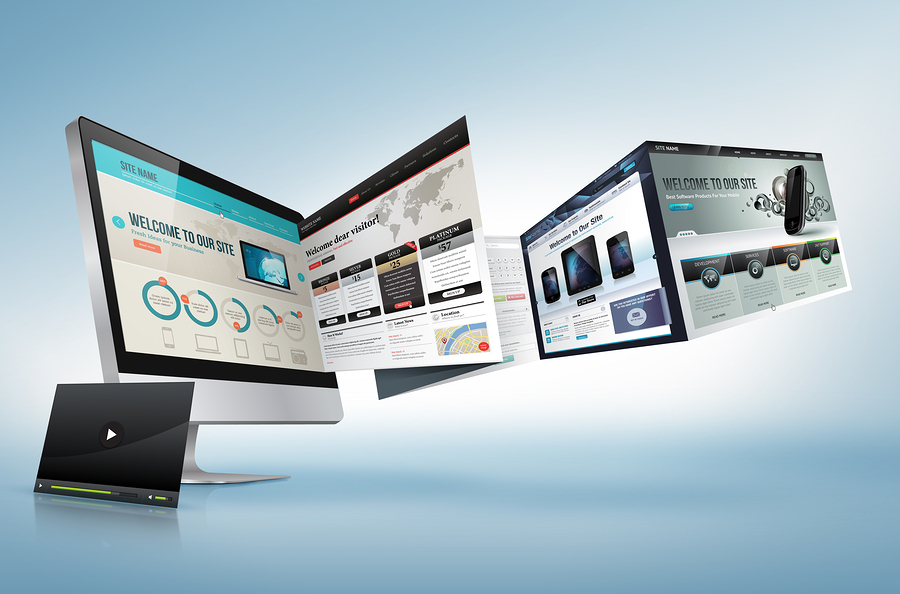The Benefits of Investing in Custom Website Design for Your Business
The Benefits of Investing in Custom Website Design for Your Business
Blog Article
Modern Web Site Style That Captures Focus and Converts
In an increasingly digital landscape, contemporary website design has become a pivotal variable in catching user focus and driving conversions. By tactically employing aesthetic power structure, responsive formats, and engaging interactive elements, designers can develop experiences that not only bring in visitors but likewise assist in purposeful interactions. Reliable call-to-action methods play an essential duty in guiding users toward wanted outcomes. As we check out these essential components, it comes to be clear that recognizing their interplay can dramatically impact a web site's performance and customer fulfillment. What are the essential elements that truly make a difference?
Relevance of Visual Pecking Order
Aesthetic power structure is an important element in web site design, as it overviews customers' attention and improves their total experience. By strategically organizing material, designers can guide users to the most vital info first, therefore boosting involvement and improving usability.
Integrating a sensible flow in web content arrangement is essential; as an example, placing the most critical information at the top of a page promotes immediate acknowledgment. Furthermore, constant use typography, such as varying font sizes and designs, helps establish a clear content structure. This organization not just help in navigating but additionally develops trust fund, as customers feel much more comfortable when they can conveniently find what they are trying to find.
Inevitably, a well-executed visual power structure not just boosts visual appeal however additionally substantially affects customer habits. By focusing on essential aspects and making sure a smooth experience, developers can successfully transform visitors into clients, reinforcing the significance of this fundamental style principle in contemporary site development.
Responsive Layout for All Instruments
Creating a seamless experience across various devices is crucial in today's electronic landscape, where customers gain access to web sites from smart devices, desktop computers, and tablets alike. Receptive design is a vital technique that ensures websites adjust fluidly to various screen sizes, resolutions, and orientations. By using versatile grids, photos, and CSS media inquiries, designers can develop designs that keep visual integrity and functionality, despite the gadget being made use of.
The significance of responsive style prolongs past visual appeals; it directly affects individual interaction and conversion prices. A site that works well on all tools motivates longer check outs and minimizes bounce prices, as customers are more probable to communicate with web content that is easy to browse. Search engines, especially Google, focus on mobile-friendly sites in their rankings, making responsive layout an essential component of search engine optimization (SEARCH ENGINE OPTIMIZATION)
Including receptive style not only enhances individual experience yet also enhances the growth process. By creating a single website that works across devices, businesses can conserve time and sources contrasted to creating separate mobile and desktop computer variations. Inevitably, receptive style is a basic strategy for modern website design, making certain ease of access and contentment for all customers, despite their device.
Engaging Interactive Aspects
While a receptive layout prepares for a functional site, incorporating engaging interactive elements is vital for capturing user focus and cultivating much deeper connections. Website Design. Interactive aspects, such as animations, quizzes, and clickable infographics, develop a more dynamic user experience, encouraging visitors to spend more time on the site
Incorporating interactive attributes can additionally guide users via facility info, making it less complicated to digest web content. For instance, interactive sliders can show product variants, while ingrained videos can provide demos or testimonies that reverberate more than static photos or text. Gamification methods, like rewards for completing tasks or involving with material, can boost user inspiration and retention.
Efficient use interactive aspects not only enhances the user experience but can also bring about higher conversion prices. By making communications delightful and useful, companies can cultivate a sense of loyalty and trust with their audience. Nonetheless, it is important to stabilize interactivity with performance; overly intricate features may prevent website speed, adversely affecting individual satisfaction. Inevitably, incorporating properly designed interactive aspects can significantly elevate a site's effectiveness, driving engagement and conversions in today's competitive electronic landscape.
Streamlined Navigation Practices
Efficient navigation is a foundation of any type of effective internet site, as it straight affects individual experience and content access. Structured navigation weblink methods guarantee that customers can easily find info, improving their communication with the site. A well-structured navigation menu should be intuitive and simple, typically featuring a minimal variety of main classifications to avoid overwhelming site visitors.
To achieve streamlined navigation, developers must prioritize a hierarchical framework that practically arranges web content. Carrying out breadcrumb trails can provide customers with context regarding their current location within the site, allowing for smooth backtracking. other Furthermore, utilizing drop-down menus can effectively conserve area while still providing access to subcategories.
Responsive layout is vital, as navigation needs to be practical across all tools (Website Design). Mobile individuals, particularly, take advantage of touch-friendly food selections and collapsible areas that preserve functionality without jeopardizing aesthetic appeals

Efficient Call-to-Action Techniques
A well-crafted call-to-action (CTA) is vital for directing customers toward wanted outcomes on a web site, as it encourages them to involve with content or buy. To optimize their performance, CTAs must be clear, compelling, and tactically placed throughout the site.
First, use action-oriented language that connects urgency or worth, such as "Start," "Join Now," or "Insurance claim Your Price cut." This language not only inspires customers however additionally sets clear assumptions concerning the following actions.
Second, consider design components; CTAs ought to stand apart aesthetically via contrasting shades, ample whitespace, and prominent positioning. A button that is easy to see and click Going Here boosts the chance of customer interaction.
In addition, personalizing CTAs based on user habits or demographics can dramatically enhance interaction. Customized messages reverberate a lot more with users, driving higher conversion rates.

Final Thought
To conclude, modern-day internet site design highlights the assimilation of visual power structure, responsive designs, involving interactive components, streamlined navigating, and reliable call-to-action strategies. These components jointly improve user experience, making sure that site visitors continue to be involved and motivated to explore web content even more. By prioritizing these style concepts, companies can substantially enhance individual retention and conversion prices, ultimately resulting in higher success in the digital landscape. The constant advancement of website design emphasizes its essential role in efficient online interaction and advertising.
In a significantly digital landscape, modern website layout has actually arised as a critical element in capturing customer interest and driving conversions.Aesthetic hierarchy is an essential component in web site design, as it overviews customers' interest and enhances their total experience.The significance of responsive design extends past appearances; it directly impacts customer involvement and conversion prices.Integrating responsive layout not only improves customer experience but additionally enhances the development process. Ultimately, responsive style is a fundamental approach for modern website style, ensuring availability and satisfaction for all individuals, regardless of their tool.
Report this page